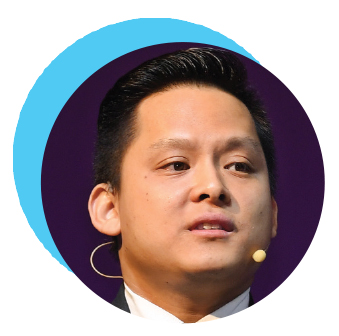
This article first appeared in Digital Edge, The Edge Malaysia Weekly on June 26, 2023 - July 2, 2023
Malaysian start-ups are in a sticky situation as they are bleeding talent, be it as a result of talent pinching or competition from regional companies that offer higher wages. Talents need to be convinced to stay as they are vital to the growth of start-ups.
Employee stock ownership plans (ESOPs) could be one such strategy for start-ups to retain talent.
According to the Southeast Asia Startup Talent Report 2023 — a joint research report by recruitment platform Glints and venture capital firm Monk’s Hill Ventures — ESOPs make employees feel more valued. Start-ups need to have people with high ownership, thus they should be treated as owners from the outset.
Indonesian e-commerce company Bukalapak and flexible-work provider of software as a service (SaaS) GoTo are examples of companies that have successfully implemented ESOP, which might lead to a rise in its popularity.
ESOP is a new concept and requires experimentation before it can be successful. Are ESOPs feasible in Malaysia? Why should they be implemented? Could it motivate employees to stay on?
Digital Edge spoke to industry players who shared their thoughts on the issue.
1. Making ESOPs a reality
There are several advantages to ESOPs that render them attractive to start-ups, despite the complexity in administering one, observes Mahadhir Yunus, CEO of Krenovator Technology Sdn Bhd. These include increased employee motivation, reduced turnover, improved morale and increased access to capital.
Mahadhir also notes that with the advantages come the downsides of implementing an ESOP, such as complexity and expense, dilution of ownership, risk of employee turnover and tax implications.
For instance, ESOPs can increase the risk of employee turnover as staff who own shares in the company are likely to leave if they believe they can make money from selling their stake. Furthermore, as ESOPs come with several tax implications, it is thus important to consult a tax adviser, he says.
“As the start-up ecosystem in Malaysia continues to grow, we will likely see more ESOPs being implemented. ESOPs can be a valuable tool for start-ups that are looking to build a strong team and achieve success,” notes Mahadhir.
To make ESOPs a reality, he says there are a few steps start-ups should take. Firstly, they should properly research the benefits and drawbacks of ESOPs. Next, consult an attorney and a financial adviser. Thereafter, clear goals should be set and a fair and equitable plan designed.
“When you design your ESOP, it is important to make sure that it is fair and equitable for all employees. You need to decide how much ownership each employee will receive and how he or she will be able to vest in their shares. You also need to decide how the ESOP will be funded,” Mahadhir advises.
Start-ups should communicate with employees and ensure that the ESOP is administered properly.
“You need to ensure the plan is not only compliant with all laws and regulations, but that it is also being managed in the best interests of both the company and its employees,” he adds.
2. Fostering a culture of ownership
In theory, ESOPs foster a culture of ownership within a company. This is because they provide the recipient with a contractual promise to become a shareholder of the company in the future, explains Shawn Ho, head of corporate, property and tax at boutique law firm Donovan & Ho.
Once the conditions of the ESOP are satisfied, it is vested. This means if a recipient chooses to exercise the ESOP, he will receive shares and become a shareholder of the company.
“This prospect of owning a small portion of the company could encourage a change in mindset from the get-go; that is, from employee to owner,” says Ho.
ESOP holders who become shareholders can potentially benefit from receiving dividends through the profit the company makes.
Ho notes, “The prospect of ESOP holders continually participating in the fruits of the company’s success via dividends can be effective in retaining key talent and aligning them towards the company’s strategies as an owner would.”
The devil is in the details, however, he warns. As there are no standard terms and conditions for an ESOP by law, it should be a customised document to fit the company’s goals and needs.
To do so, Ho recommends that start-ups consult a specialist with experience and local knowledge in designing, advising and drafting an ESOP for Malaysian companies in particular.
He cautions that ESOPs are not the be-all and end-all solution to retaining talent. For instance, companies should be aware that employees may be lukewarm to the idea of an ESOP. ESOP holders generally remain minority shareholders who may lack sufficient voting power or meaningful influence on major decisions by the company.
“Having an ESOP is a progressive step towards attracting, aligning and motivating talent. While it may not work for all start-ups, remember that an ESOP should always be designed to fit the company’s objectives and situation,” Ho reiterates.
3. Keeping it real
Victor Chua, founding and managing partner of Vynn Capital, believes talents are profit motivated. Motivating employees to stay on comes down to what is offered to them.
“You either offer monetary value, a vision that aligns with personal interest or a greater noble reason to stay,” he muses.
Ultimately, for him, an ESOP can help circumvent the issue of start-ups being unable to retain talent. This is due to the fact that ESOPs are usually tied to a vesting period. This means employees have to stay in their job for a period of time to own a stake. Moreover, if they have equity exposure, their financial interests would be aligned with those of the start-up.
“Most venture-funded start-ups would have an ESOP programme as it is one tool that venture capital firms use to help start-ups attract and retain talent. It is also a good way for founders to be more committed to their own start-ups as this is a mature consideration of offering a piece of their ambition to the greater team supporting them in achieving their vision,” says Chua.
To implement a proper ESOP with tangible outcomes, shareholders and investors should be involved in discussions. A long-term shareholding structure plan is also essential in ensuring adequate ESOP allocation for future key hires or key members. Chua advises that a success metric be put in place to consider who should be offered an ESOP.
“[ESOP] is a tool, but it does not address the reality that start-ups that can’t fundraise or have no access to capital will have little value potential for their shares. As such, the main solution is really to create more investable start-ups and more liquidity to fund these start-ups,” Chua says.
Save by subscribing to us for your print and/or digital copy.
P/S: The Edge is also available on Apple's App Store and Android's Google Play.
- China hits back at Trump with tariffs, limits on key exports
- Mr DIY founder Tan Yu Yeh relinquishes vice chairman post, to serve as adviser
- Malaysia refutes 47% US import tariff claim, takes measures to prioritise well-being of businesses and people
- 50,000 Malaysian jobs at risk, business chamber warns as it calls for urgent US tariff mitigation council
- Trump hits China tariff retaliation, says policy will remain
- ‘Worst-case scenario’ for tech wipes $1.4 trillion from Nasdaq
- Anwar says impact of latest US tariff on nation's economy still being assessed
- Tok Mat, Rubio discuss bilateral relations, Asean-US Special Summit date
- US solar’s hoarding habit will help blunt sting from Trump tariffs
- Wall Street rout drags Nasdaq near bear market



